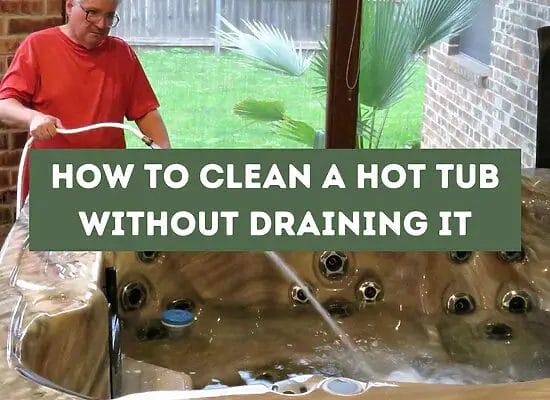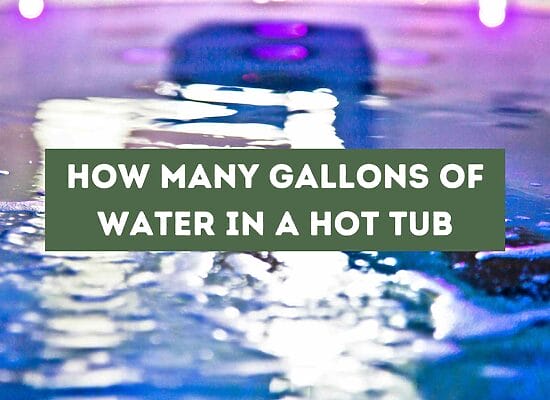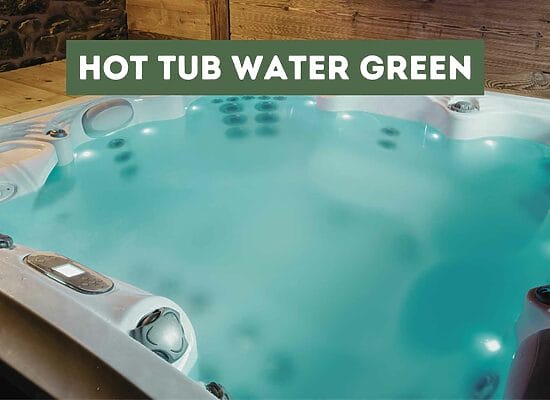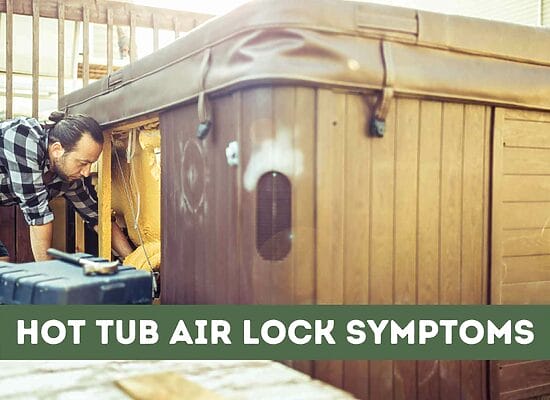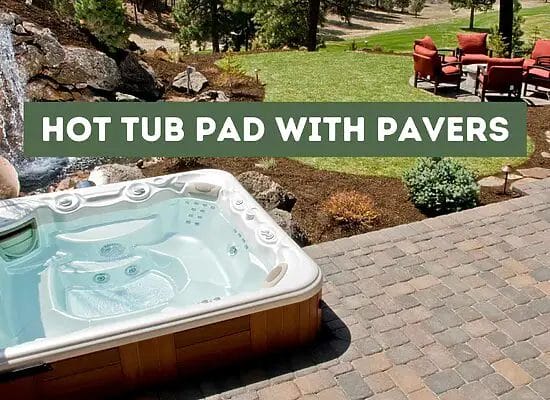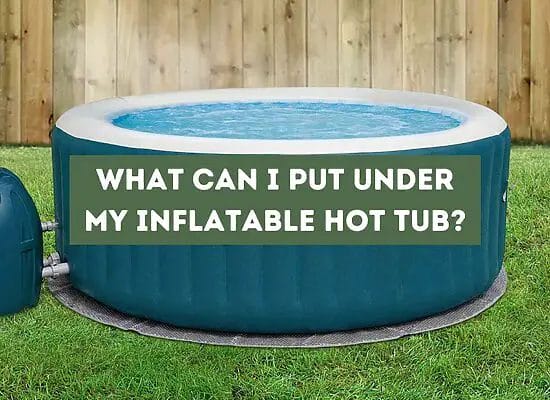
Leveling a hot tub is an essential part of its installation process. A level hot tub ensures that the water is evenly distributed and that the tub is stable. If a hot tub is not level, it can cause damage to the tub and even make it unsafe to use. In this article, we will discuss the best ways to level a hot tub and provide tips to make the process as easy as possible.
One of the most common ways to level a hot tub is by using shims. Shims are small pieces of material, usually made of plastic or wood, that can be placed under the hot tub to level it. Another option is to use a concrete pad to create a level surface for the hot tub. This option is more permanent but can be more expensive.
Other options include using a leveler, pouring new concrete, adjusting the ground beneath the hot tub using compacted gravel, installing hot tub pads, and building a raised pad.
Key takeaways:
- Importance of Leveling: Leveling a hot tub is crucial for even water distribution, stability, and preventing damage. An unlevel hot tub can stress the shell and plumbing, causing potential damage and instability.
- Methods for Leveling: Various methods include using shims (plastic or wood pieces), a concrete pad, a leveler, compacted gravel adjustment, hot tub pads, or building a raised pad. Each method offers a solution for achieving a level hot tub.
- Choosing the Right Location: The location choice affects hot tub enjoyment and maintenance. Factors include indoor or outdoor placement, backyard, patio, or deck options, proximity to water sources and drainage, and checking for nearby power or sewer lines.
- Ground Preparation: Proper ground preparation is vital to prevent issues like water displacement and uneven weight distribution. Select a flat and level area, prepare the surface with sand or gravel if needed, and ensure good drainage.
- Material Selection for Leveling: Using appropriate materials is key for stability and safety. Options like shims (wooden or plastic), supports, pavers, and platforms are available. Materials should be durable, capable of withstanding outdoor conditions, and able to support the hot tub’s weight.
- Process of Leveling: The leveling process involves determining ground levelness, preparing the installation area, placing the hot tub, using shims to level it, and securing the tub in place as per manufacturer instructions.
- Caring for a Leveled Hot Tub: Regular maintenance, preventing cracks, managing moisture, checking warranties, and knowing repair solutions contribute to the longevity of the hot tub. Professional assistance is recommended for accurate leveling, especially if lacking necessary skills.
Understanding the Importance of Leveling a Hot Tub
When it comes to hot tubs, one of the most important things to consider is ensuring that it is level. A level hot tub is crucial for a number of reasons, including preventing damage to the acrylic shell and plumbing, ensuring stability, and preventing stress fractures.
If a hot tub is not level, it can cause excess stress on certain areas of the shell and plumbing, which can lead to damage over time. This is especially true if the hot tub is on a slope or uneven surface. Even a slight slope can cause the water to pool to one side, which can put stress on the shell and plumbing.
In addition to preventing damage, leveling a hot tub is also important for stability. A hot tub that is not level can wobble or move, which can be dangerous and uncomfortable for those using it.
One of the most common issues that can arise from an unlevel hot tub is stress fractures. These occur when the shell is put under too much stress, causing it to crack. Stress fractures can be expensive to repair and can even lead to the need for a full replacement of the hot tub.
To prevent these issues, it is important to ensure that your hot tub is level from the moment it is installed. This can be done by using shims, a wooden platform, a paver, a plastic shim, a customized pad, or a concrete pad. By taking the time to level your hot tub properly, you can ensure that it remains stable and functional for years to come.
Choosing the Right Location for Your Hot Tub
When it comes to choosing the right location for your hot tub, there are a few key factors to consider. The location you choose will impact the overall enjoyment of your hot tub, as well as the longevity and maintenance of the tub itself. Here are some things to keep in mind when selecting the perfect spot for your hot tub:
Outdoor or Indoor?
The first decision you need to make is whether you want your hot tub to be indoors or outdoors. If you choose an outdoor location, you’ll need to consider factors such as weather, privacy, and accessibility. An indoor hot tub, on the other hand, offers more privacy and protection from the elements but requires a suitable space, such as a basement or sunroom.
Backyard, Patio, or Deck?
Assuming you’ve decided on an outdoor hot tub, the next step is to select the specific location. A backyard, patio, or deck are all popular options. A backyard offers more space and privacy, while a patio or deck can be more convenient and accessible. Be sure to measure the space carefully to ensure your hot tub will fit comfortably.
Water Source and Drainage
You’ll also need to consider the location of your water source and drainage. Your hot tub will need to be filled with water, and you’ll need a nearby hose or other water source to do so. You’ll also need to ensure that there is adequate drainage in the area to prevent water buildup and potential damage to your hot tub.
Power and Sewer Lines
When selecting a location for your hot tub, be sure to check for any nearby power or sewer lines. You don’t want to accidentally damage any underground utilities when digging the foundation for your hot tub.
Pro Tip: Consider installing a pergola or other type of shade structure over your hot tub to protect it from the sun and provide additional privacy. This can also help extend the life of your hot tub by preventing sun damage to the exterior and cover.
Preparing the Ground for Hot Tub Installation
Before installing your hot tub, it is essential to prepare the ground to ensure it is level and stable. A poorly prepared foundation can lead to issues such as water displacement, uneven weight distribution, and even damage to the hot tub itself. Here are some tips to help you prepare the ground for your hot tub installation:
Choosing a Location
The first step in preparing the ground for your hot tub installation is to choose a location. Look for a flat and level surface that can support the weight of the hot tub, including the water and people who will use it. Avoid placing the hot tub under trees or power lines, as falling debris or branches can damage the hot tub or cause injury.
Preparing the Surface
Once you have chosen the location, you need to prepare the surface. If you have an existing concrete patio or driveway, you can place the hot tub directly on it as long as it is level and strong enough to support the weight. If the surface is uneven, you can use sand or gravel to level it out.
If you do not have an existing surface, you can create a new concrete pad or a raised pad using pressure-treated lumber. The concrete pad should be at least four inches thick and have a slight slope for drainage. The raised pad should be level and made of sturdy materials that can support the weight of the hot tub.
Leveling the Ground
To ensure that the hot tub is level, you can use a bubble level or a laser level. If the ground is sloped, you can use shims or blocks to level it out. Place the shims or blocks under the hot tub’s feet until it is level in all directions. You can also use PVC pipes to roll the hot tub into position if needed.
Ensuring Good Drainage
Good drainage is crucial to prevent water from pooling around the hot tub, which can lead to mold and mildew growth. If the ground does not have good drainage, you can create a French drain or install a drainage system to direct water away from the hot tub.
Selecting the Right Materials for Leveling
When it comes to leveling a hot tub, selecting the right materials is crucial. The right materials will ensure that your hot tub is stable and safe to use. There are several options available, including shims, supports, pavers, and platforms.
Shims are the most common material used for leveling a hot tub. They are small wedges made of wood or plastic that can be placed under the hot tub to level it. Wooden shims are a cost-effective option, but they can rot over time. Plastic shims are more durable and can withstand the elements.
Supports are another option for leveling a hot tub. They are typically made of heavy-duty plastic and can be adjusted to the desired height. Supports are a good option if you need to level your hot tub on an uneven surface.
Pavers are a popular choice for creating a level surface for your hot tub. They are available in a variety of materials, including brick, flagstone, and cobblestone. Pavers are a durable option and can withstand heavy use. They also provide a stable surface for your hot tub.
Platforms are another option for leveling a hot tub. They can be made of wood, pressure-treated lumber, or exterior-grade plywood. Platforms provide a stable surface for your hot tub and can be customized to fit your specific needs.
When selecting materials for leveling your hot tub, it’s important to choose materials that are durable and can withstand the elements. You should also consider the weight of your hot tub and the surface it will be placed on. If you’re unsure which materials to use, consult with a professional to ensure that your hot tub is level and safe to use.
Hints and Tips:
- Always use materials that are designed for outdoor use and can withstand the elements.
- Make sure that the materials you choose can support the weight of your hot tub.
- Consult with a professional if you’re unsure which materials to use.
- Regularly check the level of your hot tub to ensure that it remains stable and safe to use.
Process of Leveling a Hot Tub
Leveling a hot tub is an essential part of the installation process. A level hot tub ensures that the weight is distributed evenly, reducing the risk of damage to the tub and the surrounding area. In this section, we will guide you through the process of leveling a hot tub.
Step 1: Determine the Levelness of the Ground
Before installing your hot tub, you need to make sure that the ground is level. Use a spirit level to check the levelness of the ground. If the ground is not level, you will need to level it before installing the hot tub.
Step 2: Prepare the Installation Area
Once you have determined that the ground is level, you need to prepare the installation area. Remove any grass or debris from the area and create a level surface. You can use a shovel to level the ground or add sand to create a level surface.
Step 3: Place the Hot Tub on the Installation Area
Carefully place the hot tub on the installation area. Make sure that the tub is centered on the area and that it is level. You can use a spirit level to check the levelness of the tub.
Step 4: Use Shims to Level the Hot Tub
If the hot tub is not level, you can use shims to level it. Shims are small pieces of material, such as wood or plastic, that you can place under the tub to level it. Place the shims under the low side of the tub until it is level.
Step 5: Check the Levelness of the Hot Tub
Once you have placed the shims, check the levelness of the hot tub again using a spirit level. If the tub is not level, adjust the shims until it is level.
Step 6: Secure the Hot Tub
Once the hot tub is level, you need to secure it in place. Use the manufacturer’s instructions to secure the hot tub to the installation area. This will prevent the hot tub from moving and ensure that it remains level.
Dealing with Uneven Surfaces
If you are installing a hot tub, it is important to ensure that it is installed on a level surface. However, sometimes, you may encounter an uneven surface that needs to be dealt with. In this section, we will cover some of the ways you can deal with uneven surfaces.
Wooden Shims
If you have a sloped surface, you can use wooden shims to level your hot tub. Wooden shims are small pieces of wood that can be placed under the hot tub to create a level surface. They are easy to use and can be purchased at most hardware stores. However, it is important to note that wooden shims may not be suitable for all situations, especially if the slope is too steep.
Sloped Concrete
If you have a sloped concrete surface, you can level your hot tub by creating a custom-built pad of wood, sand, or gravel. This will require more effort than using wooden shims, but it will provide a more stable and level surface for your hot tub. Alternatively, you can pour a new concrete pad, but this can be expensive and time-consuming.
Uneven Concrete
If you have an uneven concrete surface, you can level your hot tub with self-leveling compound. Self-leveling compound is a liquid that can be poured onto the surface and will self-level to create a smooth and level surface. This is a good option if the surface is not too uneven.
Hints and Tips:
Here are some hints and tips to help you level your hot tub:
- Always use a level to ensure that your hot tub is level.
- If you are using wooden shims, make sure they are the correct size and are placed in the right position.
- If you are creating a custom-built pad, make sure it is strong enough to support the weight of your hot tub.
- If you are using self-leveling compound, make sure you follow the manufacturer’s instructions carefully.
Caring for Your Leveled Hot Tub
Now that you have successfully leveled your hot tub, it is important to take care of it to ensure it lasts for years to come. Here are some tips to keep your hot tub in excellent condition:
Regular Maintenance
Regular maintenance is essential to keep your hot tub in good shape. You should clean the filter regularly, check the water chemistry, and replace the water every three to four months. Additionally, it is important to keep the hot tub cover clean and free of debris.
Preventing Cracks
Cracks can occur in a hot tub due to various reasons, including improper installation or leveling. To prevent cracks, make sure to use a hot tub pad or permeable pavers to provide a stable base for your hot tub. Also, avoid placing heavy objects on the hot tub cover, as this can cause it to crack.
Dealing with Moisture
Moisture is one of the biggest enemies of a hot tub. It can cause damage to the hot tub shell and lead to mold growth. To prevent moisture, make sure to keep the hot tub cover on when not in use and wipe down any excess water after use.
Warranty
Check your hot tub’s warranty to see what is covered and for how long. If you notice any issues, contact the manufacturer immediately to see if it is covered under warranty.
Solutions for Repair
If you notice any cracks or other issues with your hot tub, there are solutions available to repair them. You can use a hot tub repair kit or hire a professional to fix the problem.
Longevity of Your Hot Tub
Proper leveling and maintenance will help ensure the longevity of your hot tub. By taking care of it, you can enjoy your hot tub for years to come.
Professional Assistance for Leveling a Hot Tub
If you lack the necessary carpentry knowledge or skills, it’s best to hire a professional to level your hot tub. Experienced professionals have the skills and knowledge to level your hot tub properly, ensuring that it is safe and secure.
When hiring a professional, make sure to ask about their experience in leveling hot tubs. You want to make sure that they have experience with your specific type of hot tub and that they are familiar with the terrain and ground conditions in your area.
Professionals may also recommend using spa pads to level your hot tub. These pads are designed to provide a stable and level surface for your hot tub. They also help to absorb any vibrations and reduce noise.
If you decide to hire a professional to level your hot tub, make sure to ask for a quote upfront. The cost of leveling a hot tub can vary depending on the size of the hot tub, the terrain, and the level of experience of the professional.
FAQ: How to Level a Hot Tub
What is the easiest way to level the ground for a hot tub?
The easiest way to level the ground for a hot tub is to use a level and a shovel. Start by marking the area where you want to place your hot tub. Then, use the shovel to dig out the high spots and fill in the low spots. Keep checking the level as you go to make sure the ground is even.
What happens if a hot tub is not level?
If a hot tub is not level, it can cause a lot of problems. The water may not be evenly distributed, which can put stress on the shell and cause it to crack. The jets may not work properly, and the water may not drain properly. It can also be a safety hazard, as people may slip and fall.
How do you make a hot tub level pad?
To make a hot tub level pad, you can use a pre-made spa pad or make your own. To make your own, you will need to create a frame out of pressure-treated lumber and fill it with a level layer of gravel. Then, you can add a layer of sand and level it out. Finally, you can lay down a concrete paver on top and check the level.
What is a spa leveler?
A spa leveler is a device that is used to level a hot tub. It is typically made of plastic and is placed under the hot tub. The leveler has adjustable legs that can be adjusted to make the hot tub level.
How to level a hot tub on pavers?
To level a hot tub on pavers, start by marking the area where you want to place your hot tub. Then, lay down a layer of sand and level it out. Next, lay down the pavers and check the level. If the pavers are not level, you can use plastic shims to adjust them.
How to level a hot tub with plastic shims?
To level a hot tub with plastic shims, start by placing the shims under the low spots. Then, use a level to check the hot tub and add more shims as needed. Once the hot tub is level, use a utility knife to cut off any excess shims.


